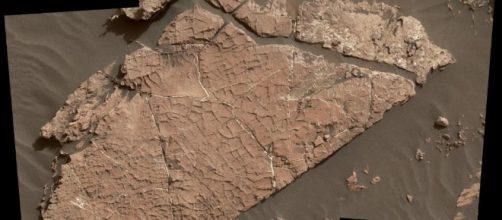Scientists analyzed a layer of mud called Old Soaker in a lower location of Mount Sharp believed to have been formed more than 4 billion years ago. This piece of mud is around 4 feet long and it contains cracks that are thought to have formed after the slab got dried following the evaporation of the water covering it. The cracks on the piece of mud is another evidence that water has existed sometime in the past on Mars and that sedimentary deposits experienced some kind of of drying out leaving them uncovered of a watery environment.
The cracks (desiccation cracks)
The cracks are believed to have been formed a little over four billion years ago and were subsequently buried by sedimentary deposits of mud, which later became stratified material. The wind may have caused erosion, depleting the layers above it. Over time, the mud that filled the cracks withstood erosion, more than the mud surrounding it, which is the reason the cracks seem like raised ridges.
Two types of cracks
Scientists recognized two types of cracks on the mud slab. Cracks formed at the surface of the piece of mud and cracks formed in the interior of it. Cracks on the surface, normally are filled with tiny particles of dust. The second fracture occurs after sedimentary deposits have turned into rock.
The pressure from the overlying sediments causes the inside fractures of the rock. The fractures are generally filled up with mineral deposits, such as calcium sulfate.
Circulating minerals through the cracks
Both types of cracks and the processes that formed them were discovered on Old Soaker, revealing that there were varied processes of fracturing in which the external cracks occurred first followed by sedimentary deposits on top and, over time, the hardening of the overlying layer of sediment, concluding with a subsequent cracking of the interior and the formation of veins inside due to the circulation of minerals through the channels.
These cracks resemble those seen on the sides of any road on earth when the water surrounding them has desiccated.
All of this reveals that ancient lakes varied in size and depth. Water may have also evaporated, although not permanently. The discoveries made on the red planet are broadening knowledge about Mars habitability, which opens new perspectives about Mars ‘exploration.

